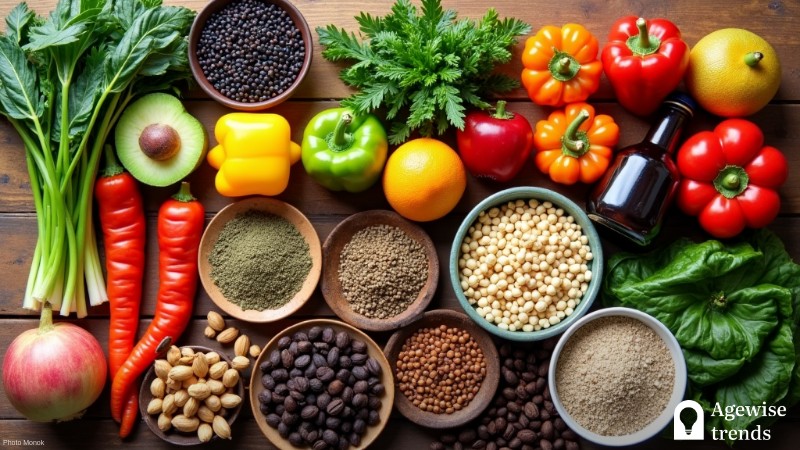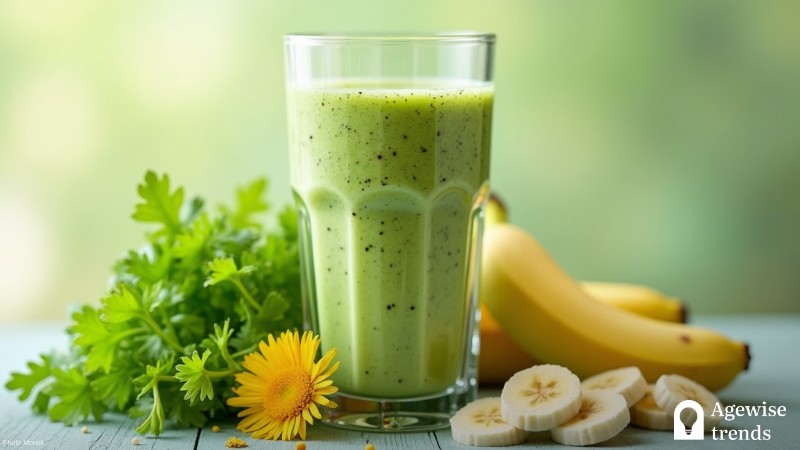Eating a wide range of plant-based foods is one of the simplest ways to improve digestion, strengthen the immune system, and support heart health. Research suggests that consuming at least 30 different plant foods each week can increase the diversity of gut bacteria, which plays a key role in digestion and reducing inflammation. A healthy gut is linked to better overall health, including a lower risk of chronic diseases like heart disease, type 2 diabetes, and digestive issues.
For older adults, making dietary changes doesn’t have to be overwhelming. Small, manageable steps—such as adding more whole grains, nuts, seeds, and legumes—can have a big impact. A diet rich in plant foods provides fiber, essential nutrients, and heart-healthy fats that promote long-term wellness. With a few easy adjustments, seniors can enjoy meals that are both nutritious and satisfying without making drastic changes to their usual eating habits.
Key Takeaways
Eating a diverse range of plant foods improves digestion, boosts the immune system, and promotes heart health among older Americans.
- Eating at least 30 different types of plant foods each week boosts the variety of your gut bacteria, which can help reduce inflammation and lower the risk of chronic diseases.
- Making simple changes to your diet—like adding whole grains, nuts, seeds, and legumes—can significantly increase your fiber intake and overall wellness without requiring drastic shifts in your eating habits.
- Healthy fats from sources like avocados, nuts, olive oil, and fish can help lower cholesterol levels and reduce the risk of heart disease.
Increasing fiber intake with simple meal changes
Fiber is essential for digestion and gut health, helping to prevent constipation, regulate blood sugar, and feed beneficial bacteria in the gut. A diet rich in fiber can also lower cholesterol levels and reduce the risk of heart disease. Thankfully, increasing fiber intake is simple and doesn’t require major changes.
One way to add more fiber to meals is by blending beans into pasta sauces or soups. This makes the dish heartier while providing extra protein and fiber. Another easy trick is to mix seeds—such as flaxseeds, chia seeds, or hemp seeds—into oatmeal, yogurt, or smoothies. These seeds not only provide fiber but also contain omega-3 fatty acids, which support brain and heart health.
Whole grains like brown rice, quinoa, millet, and bulgur wheat are excellent choices for fiber. Unlike white rice and refined grains, whole grains retain their nutrients and provide long-lasting energy. Switching to whole-grain bread, pasta, or crackers is an easy way to improve gut health.
The role of healthy fats in heart health
Healthy fats are important for maintaining a strong heart and keeping cholesterol levels in check. While unhealthy fats—like trans fats and excess saturated fats—can increase the risk of heart disease, unsaturated fats offer many benefits, including lowering bad cholesterol and reducing inflammation.
Avocados are one of the best sources of heart-healthy fats. They contain monounsaturated fats, which help lower LDL (bad) cholesterol while preserving HDL (good) cholesterol. Adding sliced avocado to toast, salads, or grain bowls is an easy way to incorporate these beneficial fats into meals.
Nuts such as almonds, walnuts, and pistachios provide unsaturated fats, fiber, and antioxidants that support heart health. A handful of mixed nuts makes for a great snack, and chopped nuts can be sprinkled over oatmeal, salads, or yogurt for added crunch and nutrition.
Olive oil is another key ingredient in a heart-healthy diet. It is packed with antioxidants and healthy fats that protect blood vessels and reducing heart disease. Using olive oil for cooking, drizzling it over roasted vegetables, or mixing it into salad dressings is a simple way to benefit from its heart-protective properties.
For those who eat fish, options like salmon, mackerel, and sardines provide essential omega-3 fatty acids. These healthy fats help reduce inflammation and improve heart function. Including fish in meals a few times a week is a great way to boost omega-3 intake.
Hemp seeds are another excellent source of plant-based fats and protein. Sprinkling them over oatmeal, yogurt, or smoothies adds both flavor and nutrition.
Simple ways to add more plant-based foods to meals
Incorporating a variety of plant-based foods into meals doesn’t have to be difficult. By making small adjustments, seniors can enjoy a diverse and nutrient-rich diet without giving up their favorite foods.
For breakfast, a bowl of oatmeal topped with fresh berries, nuts, and seeds is an easy way to start the day with fiber, healthy fats, and antioxidants. This combination supports digestion and keeps energy levels steady.
A plant-forward lunch could include a quinoa and black bean salad with leafy greens, bell peppers, and a simple olive oil dressing. The mix of fiber-rich grains and legumes makes the meal both satisfying and heart-friendly.
Dinner can be just as simple and nutritious. A bowl of lentil soup loaded with vegetables such as carrots, celery, and tomatoes offers warmth and essential nutrients. Lentils provide plant-based protein and fiber, making them a great meat alternative.
By consistently incorporating different plant-based foods into meals, seniors can maintain a balanced diet without strict restrictions. This flexible approach makes healthy eating sustainable and enjoyable.
Creating a long-term, balanced eating pattern
A plant diet doesn’t mean giving up favorite dishes. Instead, the goal is to gradually increase the variety of plant-based ingredients while keeping meals enjoyable and satisfying.
Blending plant foods into everyday dishes is an effective way to boost nutrition. For example, mixing pureed beans into pasta sauces or adding spinach to smoothies increases fiber and nutrients without changing the flavor.
For older adults, making simple changes—such as eating more grains, vegetables etc—can greatly improve gut health and heart function. By incorporating a variety of different plant foods each week, seniors can enjoy a diet that is not only nutritious but also easy to maintain.















